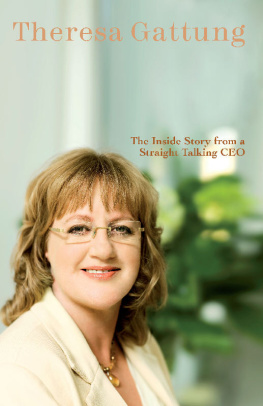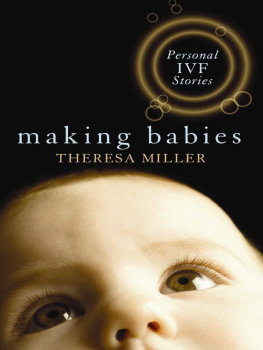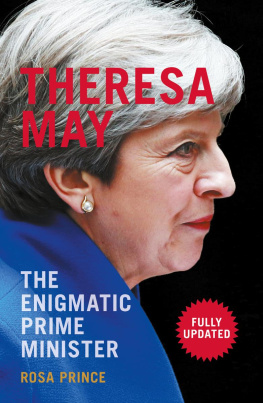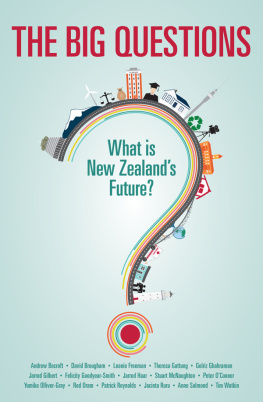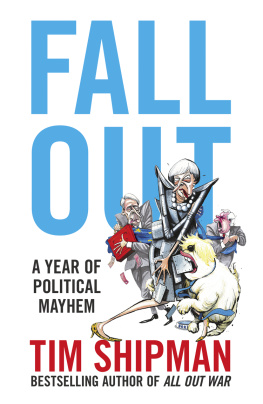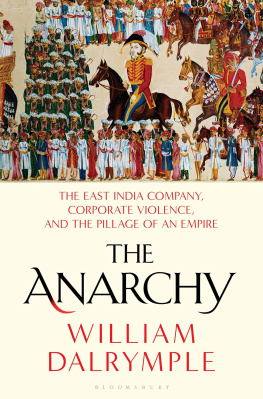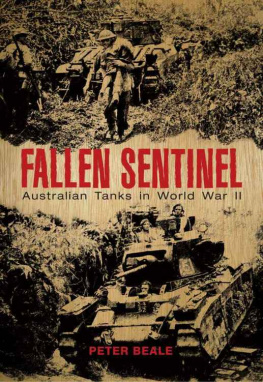No one finishes a book and says Gosh, that was easier than I thought it would be. And so it has been with me. Its been fascinating, though, excavating past, present and future. This book is in large part a memoir, partly but not totally based on diaries I kept over the years. Some events covered are a matter of record; the rest is my interpretation of events.
There are some special people Id like to thank.
First, Nicola Legat, publishing director at Random House. As a first-time author who didnt have a very good idea of what she was getting herself into, I found it a pleasure to work with you.
My darling sister Angela, who really is of the angels thank you for helping me catalogue my voluminous source material.
John Savage, my former partner and forever friend thank you for helping me with some of the original research drawn upon in the second half of the book, and for being big enough to be comfortable with me talking about what happened in our relationship.
My dear, dear friend Margaret Doucas thank you for being a constant source of support during the writing of this book.
And finally to my closest friends who reviewed drafts for me you know who you are and I love you all.
One crisp South Island evening in August 2009 I found myself in Oamaru, speaking to a group of about 70 businesswomen gathered at Portside restaurant. I am asked to speak to groups all the time and I generally decline, but when local businesswoman Sue Morton asked me to come and speak to her business network, it ticked three of my boxes: Will this advance the recovery of the wool industry in New Zealand? Will this inspire and motivate women as I, in turn, have been inspired and helped by the women who went before me? And, finally, is it somewhere I would like to go?
It turned out to be a wonderful evening, with the discussion ranging over many themes, from doing business in a recession to feminism. When we finished, I climbed into Cindy and David Douglass four-wheel-drive for the 45-minute drive to their home at Dome Hills Station. On a property framed by mountains which are under snow for many months of the year, Cindy and David have diversified their business from pastoral farming to include tourism, and Cindy operates a tourist lodge on the station. However, she thought I might feel a bit isolated staying there by myself so she kindly offered me her daughter Lucys bedroom to stay in, as Lucy was away at university. The next morning David, Cindy and I drove through the snow around the station and talked about sheep, skiing and land tenure review. It all felt a very long way from anything Id ever done before.
It was the third iconic South Island high-country station Id been on in eight weeks, after John and Heather Perriams Bendigo Station in Central Otago, and Christine Fernyhough and John Bougens Castle Hill Station in Canterbury. On Castle Hill Id spent the afternoon mustering merinos with John Bougen and just one huntaway dog. At Bendigo, friends and I had enjoyed John Perriams wonderful hospitality in his restored turn-of-the-century homestead and visited the adjacent gold-mining settlement remains.
These visits were part of a new venture for me, chairing Wool Partners International, a commercial entity set up to reinvigorate New Zealands strong wool industry that is, wool 28.5 microns or coarser, used primarily for carpets. This wool comes from sheep such as Romneys. We had just launched a premium brand, Laneve, and announced deals with two large US carpet manufacturers, Glen Eden Wool Carpet and Bellbridge Carpets, to manufacture Laneve ranges from early 2010. These recent milestones, the three high-country sheep station visits and the talks I had been giving to various rural groups, consolidated the feeling that I was in the thick of farming issues and that this was an exciting and pivotal time for both sheep farmers and the wool industry.
New Zealand was built on the sheeps back, as they say. Wool was once the countrys major export, but this proud industry had been in decline for around 30 years, completely outmarketed internationally by the synthetic carpet industry and driven by acrimony, narrow self-interest and far too many players at home. During the previous 12 months, the chief executive of Wool Partners we had recruited, Iain Abercrombie, had taken on a rather heroic challenge: to convince farmers that there was a future for strong wool and demonstrate that the right strategy for success was to bring growers and the market much closer together than the current fragmented state. This was along similar lines to the successful model of New Zealand Merino Ltd, a company formed in the mid to late 1990s to market and promote merino fine wool.
At my talk in Oamaru, and at Bendigo, Castle Hill and Dome Hills stations, the conversation quickly turned to the crisis facing sheep farmers today. Twenty years ago farmers were paid $6 a kilo for wool used in carpets, but by 2009 they were lucky to be getting half that. Manufacturers in the United States told us that the price of synthetic carpets, which are produced from oil, rose nine times in the year to July 2008, when the oil price hit US$150 a barrel, yet prices paid to sheep farmers for wool declined.
New Zealand produces 30 per cent of the strong wool traded worldwide. We also produce the highest quality wool in the world. This is not just a story we tell ourselves: when I went to the United States in late 2008 and listened to manufacturers big and small, they all said New Zealand wool was the best in the world. Despite this, there have been very poor returns to growers for at least two decades, and over that time our sheep population has dropped from well over 60 million to just over 30 million.
As we discussed that night in Oamaru, how many industries are there in which New Zealand has world-scale volume and a quality advantage? Not many. Perhaps only dairy, and look how the success of Fonterra, New Zealands multibillion-dollar dairy cooperative, has transformed the agricultural sector to the benefit of farmers and all New Zealanders. We all agreed wool should be a marketers dream. Instead, the near disintegration of this industry is a national tragedy.
Nylon carpet was invented as a cheaper alternative to wool, but it has grown in popularity and now only a fraction of carpet sold in the United States is wool. Worse, the marketing of the nylon carpet industry features lambs so they have outmarketed wool using wools own imagery!
There have been many books written on the wool industry, and a useful place to start is the gradual demise of the New Zealand Wool Board, which began in the 1990s although formal disestablishment didnt occur until 2003. New Zealand started withdrawing from the International Wool Secretariat (IWS) in 1994. This meant New Zealand no longer had rights to use its Woolmark a very well-recognised brand and it was replaced by the Wools of New Zealand fern-frond identity, often referred to as the fern mark. Farmers from those days tell me that New Zealand wool growers did not feel they were getting a fair shot from the IWS whose focus was much more on Australia.
With the industry in flux, New Zealand merino growers, who numbered only many hundreds rather than the many thousands of strong wool growers, seized the chance to do their own thing, setting up their own marketing organisation. Bendigos John Perriam was a key player when New Zealand Merino was formed. Through the company working with the likes of clothing manufacturer Icebreaker in New Zealand and SmartWool in the United States, the price growers receive for merino has steadily risen. When New Zealand Merino started in 1996, 19-micron wool sold for $6.76 a kilo, around 15 per cent cheaper than Australian wool at that time. By late 2009 New Zealand Merino was offering 19-micron contracts for the active outdoor market at $14 a kilo a premium of 18 per cent over average Australian prices since 1996. That turnaround was achieved by the growers partnering with manufacturers who produced great products and told the story behind them.

